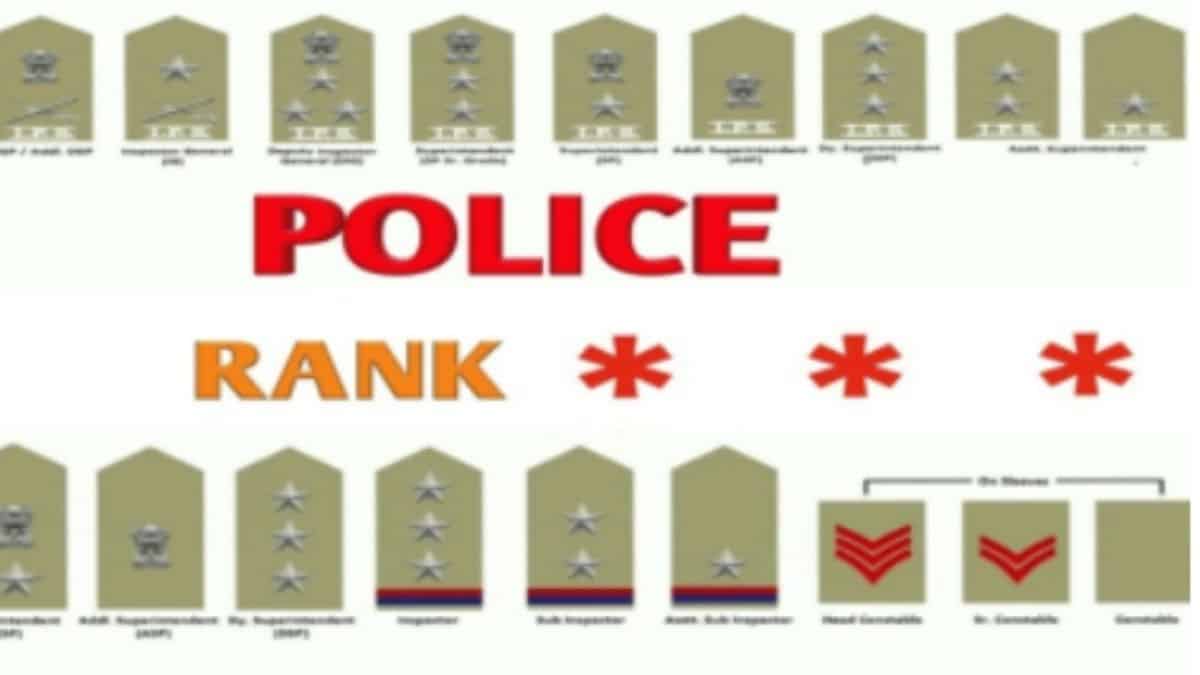The Ranking System in Indian Police Services

Law enforcement is a system which enforces law and orders ,investigates crimes and safeguarding a country’s citizens and in a higly populated country like India with an extensive area ,a huge and an effective police force is needed.
India has its own police service in each of its states and union territories.
In Article 246 of the Indian Constitution, police is chiefly considered as a matter of state concern. Although the system has little variations from state to state but they generally follow a similar pattern of hierarchy.
The rules and regulations for their conduct have been mentioned in the Indian Constitution which are to be followed by the state police. The Indian Police Service is regulated under the Ministry of Home Affairs.
The home department of every state government is responsible for regulation their state police force. The state police services include three tiers of officers:
1.senior officers
2.Upper subordinates
3.police constabulary
RECRUITMENTS:
The senior officers are recruited by the Union Public Service Commission or through the State Public Service Commissions. The second tier officers are recruited by the police recruitment boards of their respective states.
HIERARCHY:
The Director General of Police heads the state police service and is responsible for the administration of entire state police force .He is the highest ranking police officer in a state and holds a three star position.
He is assisted by an Assistant Director General of Police
Th state is divided into police zones headed by Inspector General of Police. The zones are subdivided into police ranges or divisions which are administered under the Deputy Inspector General of Police.
The ranges are disunited into districts. The larger districts are overlooked by the Senior superintendent of Police while the smaller districts are headed by Superintendent of Police(SP).The Superintendents have the
power to overlook subordinate police stations, investigate crimes and traffic police in their designated areas.
Subsequently the senior officers are followed by upper subordinate officials. These State Public Police Officers include Deputy Superintendent of Police(DSP),Additional Superintendent of Police, Senior Superintendent of Police.
The districts are divided into subdivisions also known as circles, are administered by a DSP rank officer.
These subdivision includes several police stations which are headed by a SHO(Station House Officer) who are inspector rank officers.
The lowest level of Indian Police Service is designated to police constabulary. They represent more than 85 percent of entire police force. Their hierarchy includes: Head Police Constable, Senior Police Constable, Police Constable
.Their work includes patrolling streets ,escorting, as guards, conducting investigations and surveillances.
POLICE COMMISSIONERATE:
Some of the metropolitan cities have police commissionerate which are headed by police commissioners. This system is answerable to the state governments. They have powers related to licensing arms and control.
It acts as a dual system of control at district level.
They are followed by Joint Police Commissioners (JCPs), Deputy Police Commissioner (DCPs) and Assistant Commissioner of Police (ACPs) in the decreasing order of their alignment.


